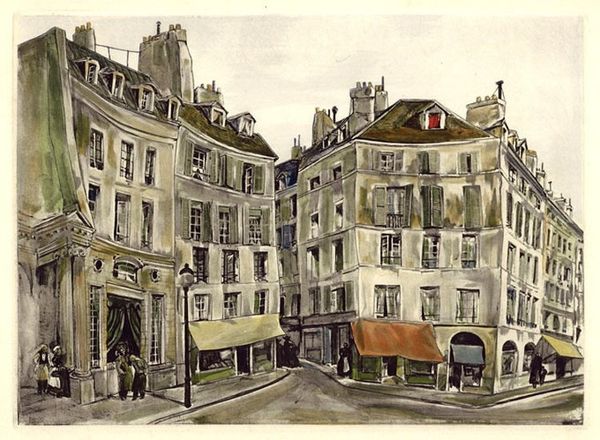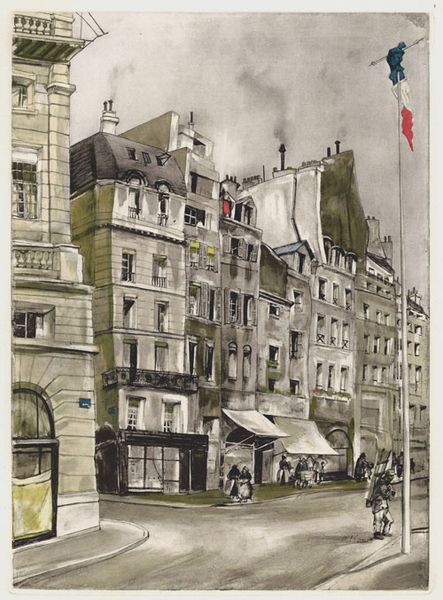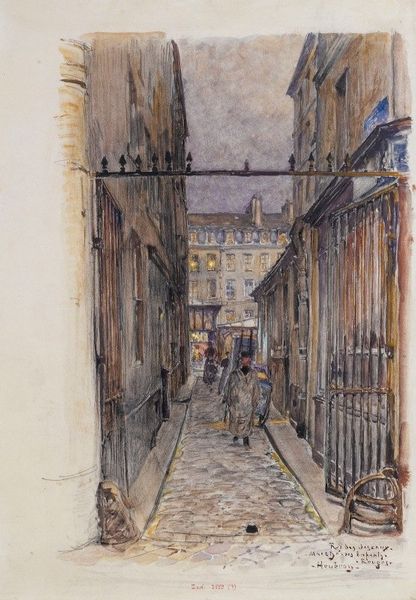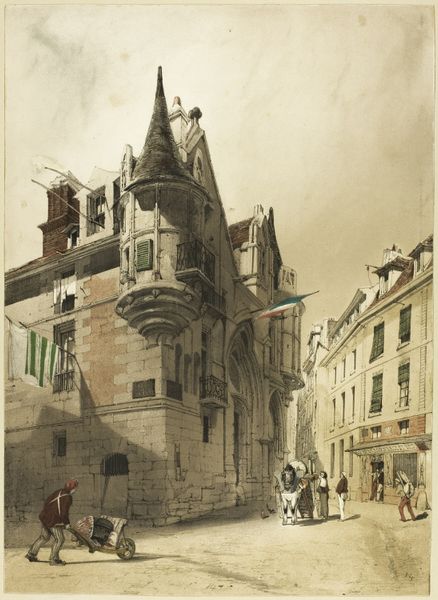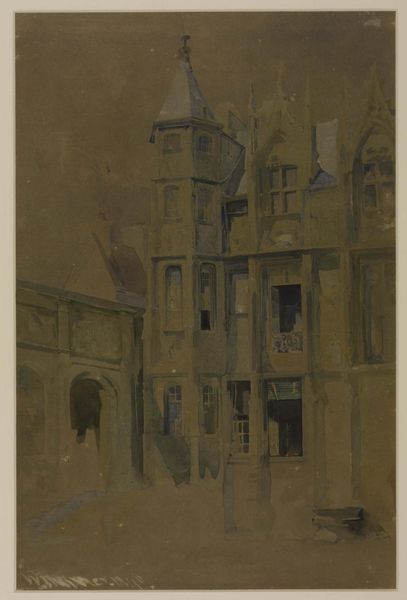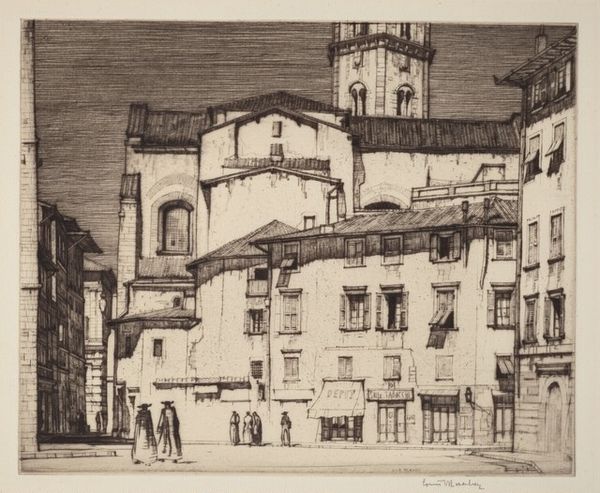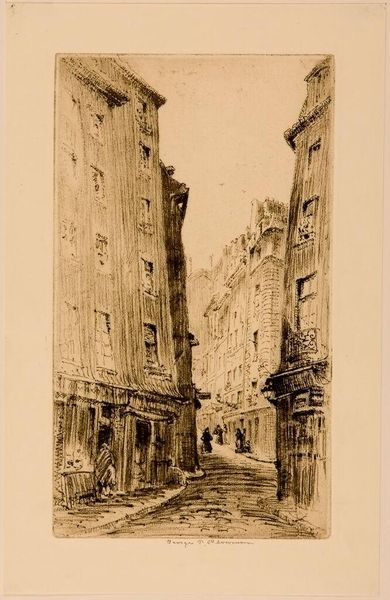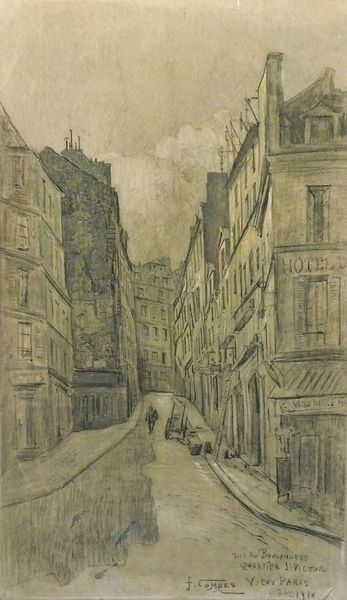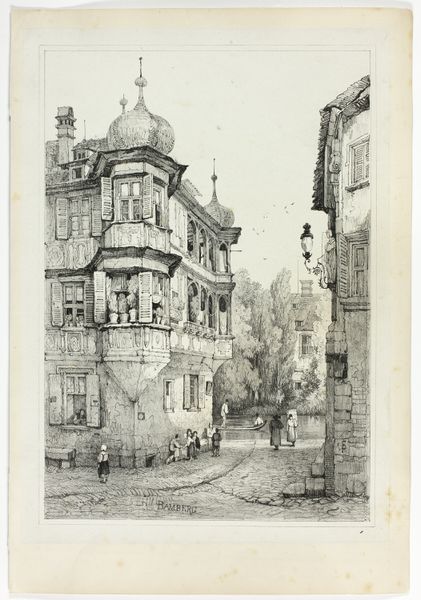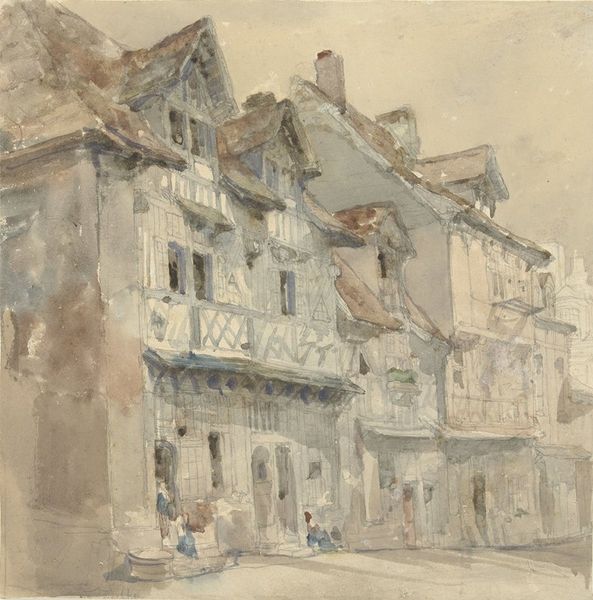
Copyright: Tsuguharu Foujita,Fair Use
Editor: Foujita’s watercolor painting, “Le quai aux fleurs, Notre-Dame” from 1950, presents a muted cityscape. The architecture feels like it's breathing, somehow… melancholy even, in its aged beauty. What pulls you in when you look at this piece? Curator: Ah, Foujita, he captures that Parisian melancholic charm, doesn't he? It’s the masterful way he handles light, I think. See how the watercolor almost glows? The way he balances detail with a sense of ethereal impermanence? It reminds me of old memories, the way they fade at the edges but still hold a powerful emotional resonance. Doesn't it feel like a half-remembered dream to you? Editor: It does a bit. I can feel the memory aspect, certainly with Notre Dame sitting subtly in the background. It also strikes me that Foujita has clearly thought a lot about the relationship between Paris and Japanese art here. Does that influence your impression, knowing something about the artist's background? Curator: Absolutely! Knowing Foujita moved between cultures definitely colors my perspective. Look closely, and you can see how the precise line work evokes Japanese calligraphy, even amidst this very Western scene. He's bridging worlds, and perhaps even suggesting that beauty and a sense of place can exist anywhere. I wonder, how does knowing it's watercolor change the way you experience it? Editor: Knowing it’s watercolor gives it a transparency, literally and figuratively. Like the history of Paris is still forming in front of us. Curator: Exactly! That "still forming" feeling. That's the magic, isn't it? An old scene, constantly reborn with each viewing, touched by our own experiences. Editor: It definitely gave me a fresh perspective. Curator: Me too. Art’s always teaching us something new, I think. A real joy, and a journey to behold, yes?
Comments
No comments
Be the first to comment and join the conversation on the ultimate creative platform.

